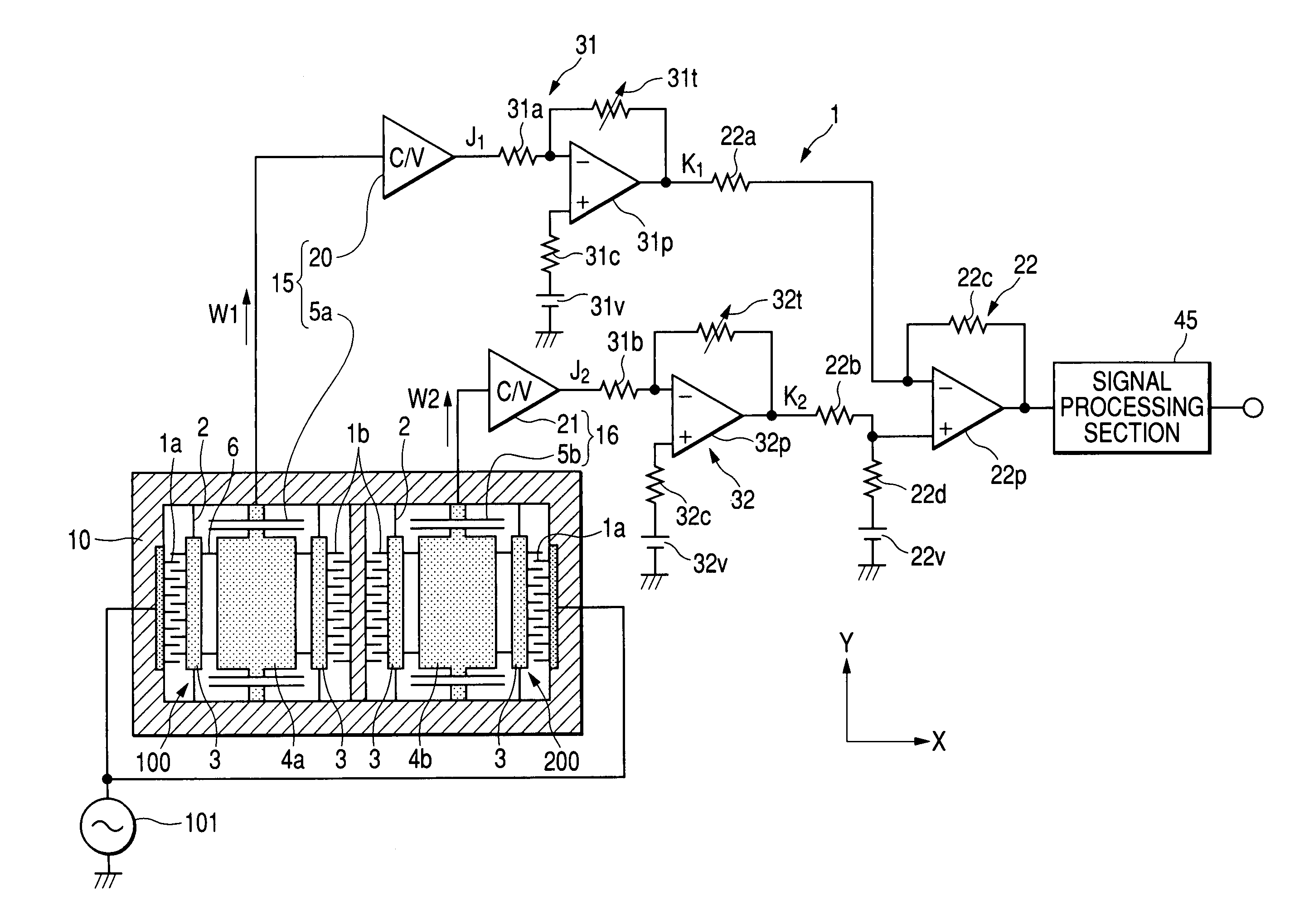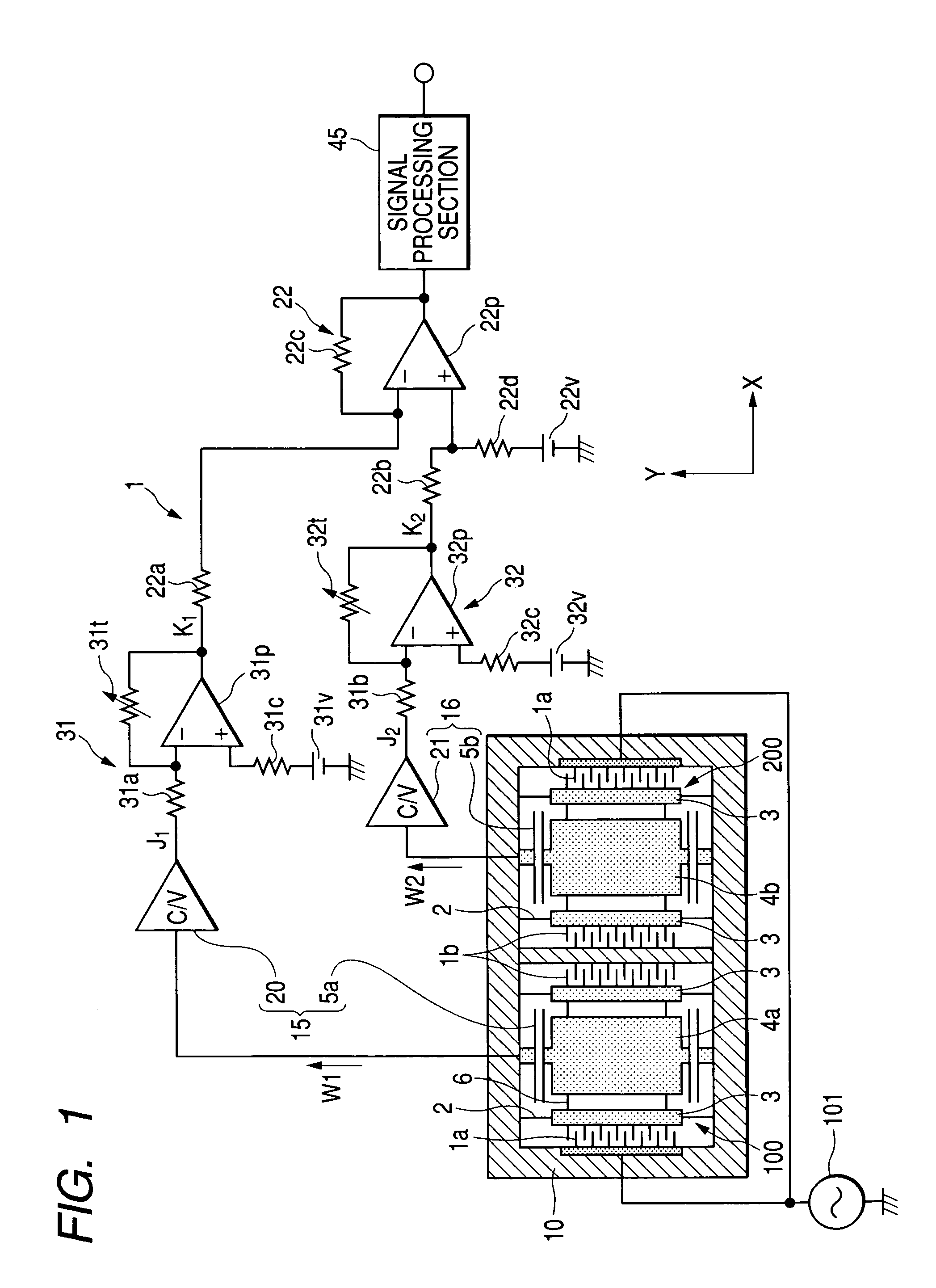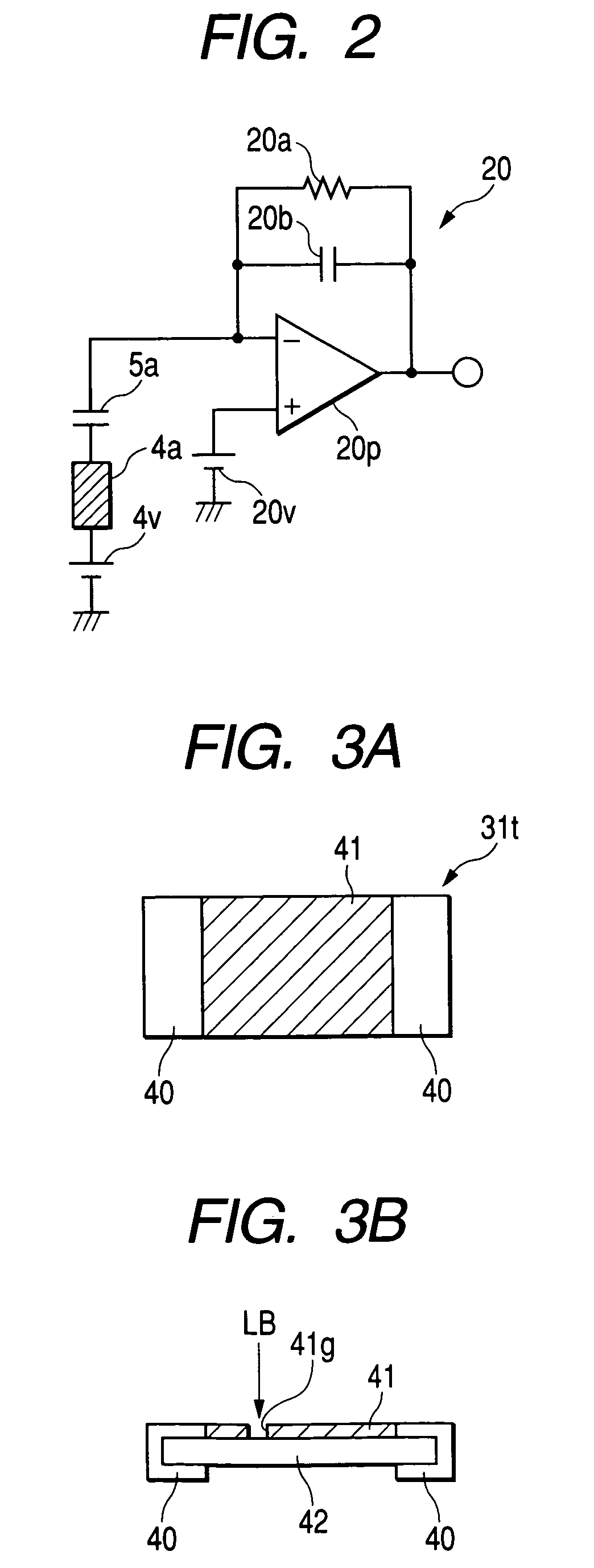Vibration type angular velocity sensor
a technology of angular velocity sensor and vibration type, which is applied in the direction of acceleration measurement using interia force, turn-sensitive devices, instruments, etc., can solve the problems of deteriorating the sensing accuracy of the sensor, affecting the detection accuracy of differential waveform detection, and individual differences in angular velocity sensing properties of the sensor, so as to improve the detection accuracy based on the differential waveform detection, the effect of suppressing the aging change of once adjusted valu
- Summary
- Abstract
- Description
- Claims
- Application Information
AI Technical Summary
Benefits of technology
Problems solved by technology
Method used
Image
Examples
Embodiment Construction
[0034]Preferred embodiment of the present invention will be explained hereinafter with reference to attached drawings.
[0035]FIG. 1 is a circuit diagram showing an overall arrangement of a vibration type angular velocity sensor (that may be simply referred to as an “angular velocity sensor,” hereinafter) in accordance with a preferred embodiment of the present invention. The vibration type angular velocity sensor 1 has a sensing section that consists of a first sensor unit 100 and a second sensor unit 200. The first sensor unit 100 includes a vibrator (e.g. weight) 4a and a sensing waveform generating section 15, while the second sensor unit 200 includes a vibrator (e.g. weight) 4b and a sensing waveform generating sections 16. The vibrators 4a and 4b oscillate in a predetermined standard vibrating direction X. When an angular velocity is applied to respective vibrators 4a and 4b, an angular velocity oscillatory component is generated in a predetermined angular velocity sensing direc...
PUM
 Login to View More
Login to View More Abstract
Description
Claims
Application Information
 Login to View More
Login to View More - R&D
- Intellectual Property
- Life Sciences
- Materials
- Tech Scout
- Unparalleled Data Quality
- Higher Quality Content
- 60% Fewer Hallucinations
Browse by: Latest US Patents, China's latest patents, Technical Efficacy Thesaurus, Application Domain, Technology Topic, Popular Technical Reports.
© 2025 PatSnap. All rights reserved.Legal|Privacy policy|Modern Slavery Act Transparency Statement|Sitemap|About US| Contact US: help@patsnap.com



